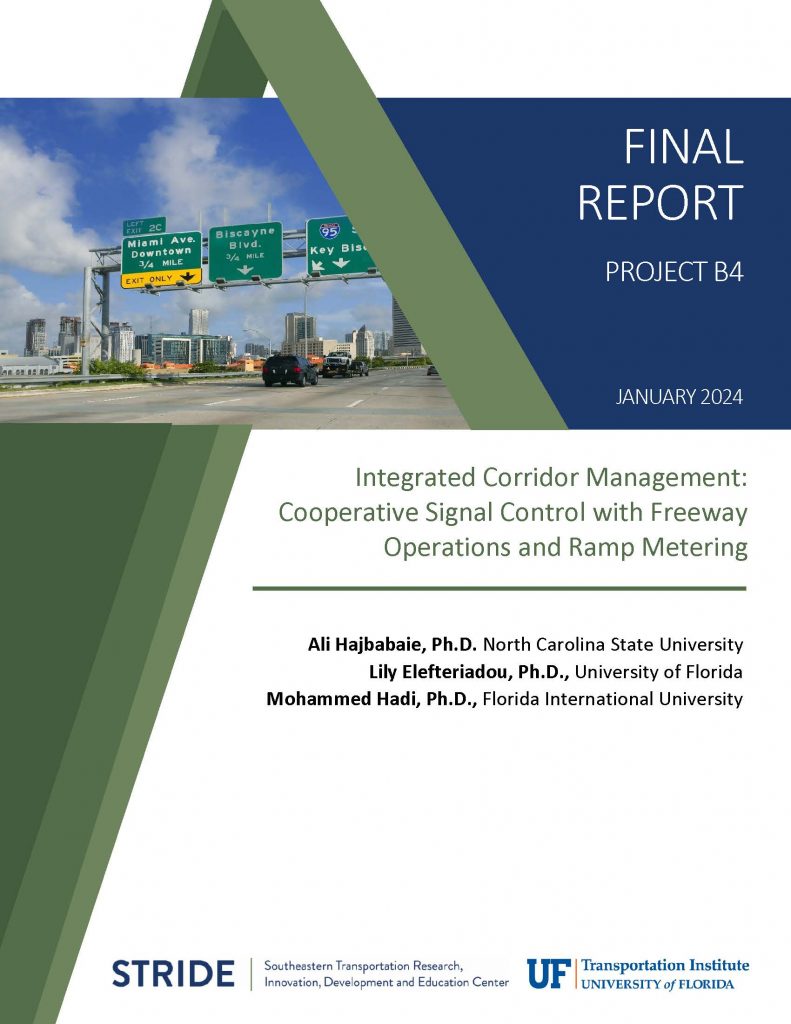Integrated Corridor Management: Cooperative Signal Control with Freeway Operations and Ramp Metering
Research Team
Ali Hajbabaie, Ph.D. (NCSU)
Lily Elefteriadou, Ph.D. (UF)
Mohammed Hadi, Ph.D. (FIU)
UTC Project Info [view]
Final Report [view]
Tech Transfer Report [view]
What is the current issue? When the traffic congestion on the freeway facility is high, metering rates increase, resulting in longer queues along the on-ramp. Such queues may eventually spill back to the upstream intersection or interchange. When such intersections are along an arterial corridor with high traffic demands, queue spillback from ramps or downstream signals can disrupt operations on the entire facility. One way to remedy the long queues is to flush queued vehicles along on-ramps, which leads to deteriorating traffic performance on the freeway facility. Strategies can be implemented such that instead of having a long queue on an on-ramp (or a downstream congested signal) that can spillback to upstream intersections, the queue can be distributed across the arterial corridor. This queue distribution will not only improve traffic performance on the freeway facility, but it can also improve progression on the arterial corridor.
What will the research produce? The research team expects to generate the following products as a result of this research project:
- Software tools for optimizing signal control at interchanges and along the arterial corridor as a function of freeway operations
- Software tools for establishing cooperative signal control and ramp metering at interchanges, the arterial corridor, and freeway on-ramps
- Guidelines for State DOTs to implement interchange signal control considering freeway operations including the presence of ramp metering
- Application of the method into an existing macroscopic tool (HCS) based on the results of NHCRP 15-57
- A Webinar summarizing the entire research effort and explaining the use of the software tools and the guidelines developed
